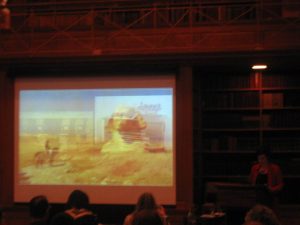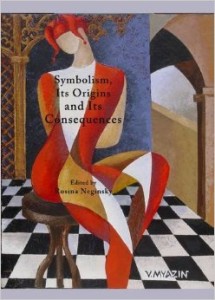‘The Eloquence of Line: or what Dutch Symbolists learnt from Egypt’
The Symbolist Movement: Its Origins and Its Consequences’, University of Illinois, Champaign-Urbana 2009
Abstract:
‘Most of all, I like Egyptian Art’ wrote the Dutch artist Johan Thorn Prikker. He was not the only one. In the Netherlands, like elsewhere, Symbolist painters looked at Pharaonic art. And they read early nineteenth-century theories as well, especially about the ornamental qualities. ‘Born from nature, stylized by the artist’ continued Thorn Prikker his explanation. Finally their study resulted -as a reaction on Academism- in a new style, characterized by the tight rhythm and the typical hand gestures. The distinguishing lovely lines developed now as well.
The oeuvre of Jan Toorop is in this context most essential. In my contribution I will focus on his work and argue that Egyptian elements changed Toorop’s work in three stages. Firstly Egyptian artefacts like the obelisk and sculptures appear as objects. In the second stage the Egyptian heritage affects Toorop’s style to become more ‘pure’, or in Thorn Prikkers words, ‘stylized’. In a third stage, Toorop uses Egyptian objects and language to add a deeper meaning to his content.
Toorop therefore not only joined the Belgian ‘Société des Vingt’ in his search to catch the essential Ideal for his work, he also became a member of the French Rosicrucians. But not for long: the Theosophists turned out to be far more appealing for Toorop in their embrace of ancient Egypt as keeper of the truth. In my contribution I will clarify how their program can be read in Toorop’s masterpiece ‘The Sphinx’.
Website: http://www.uis.edu/hosted-orgs/ALMSD/conferences/2009/index.html

